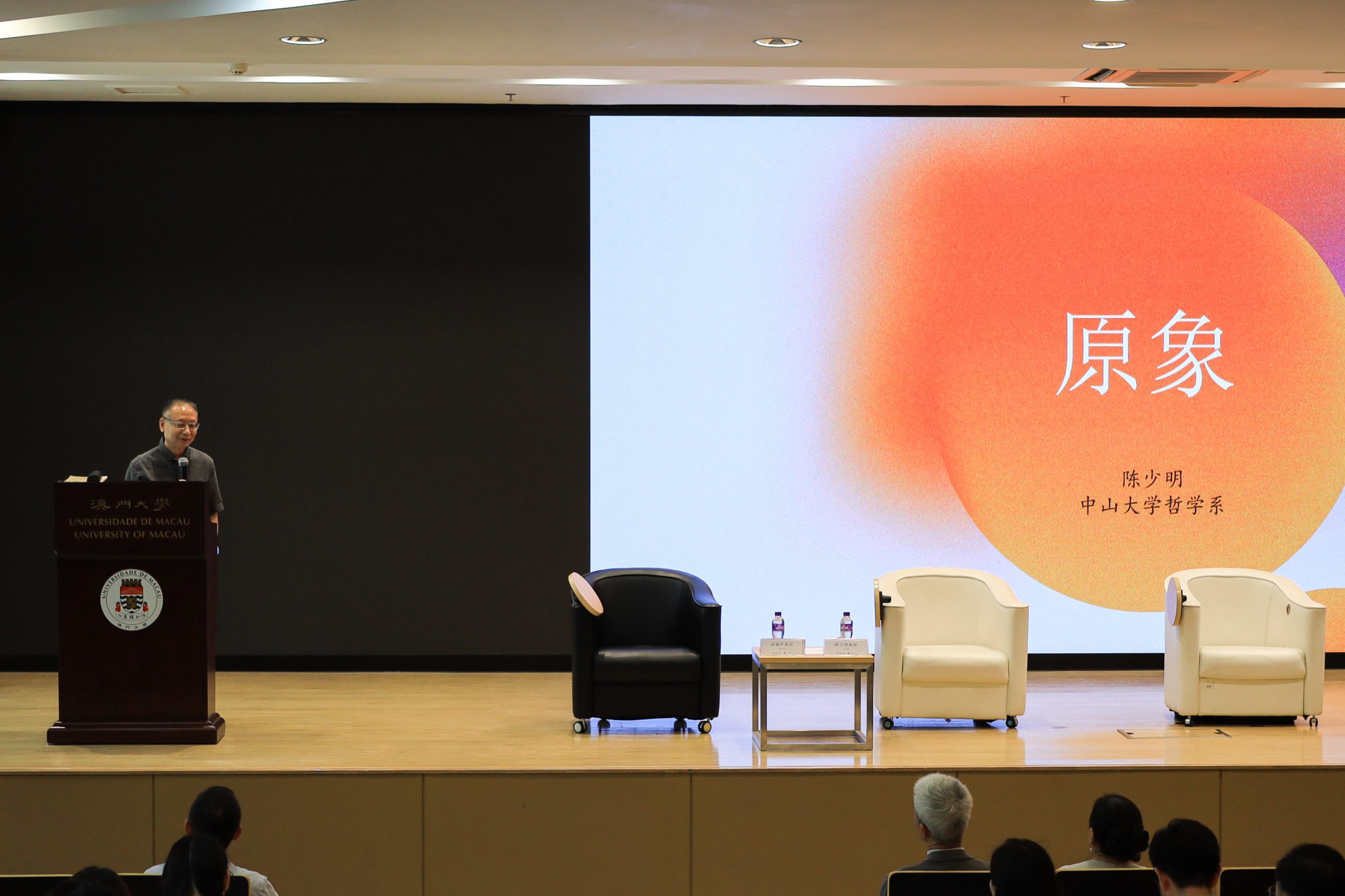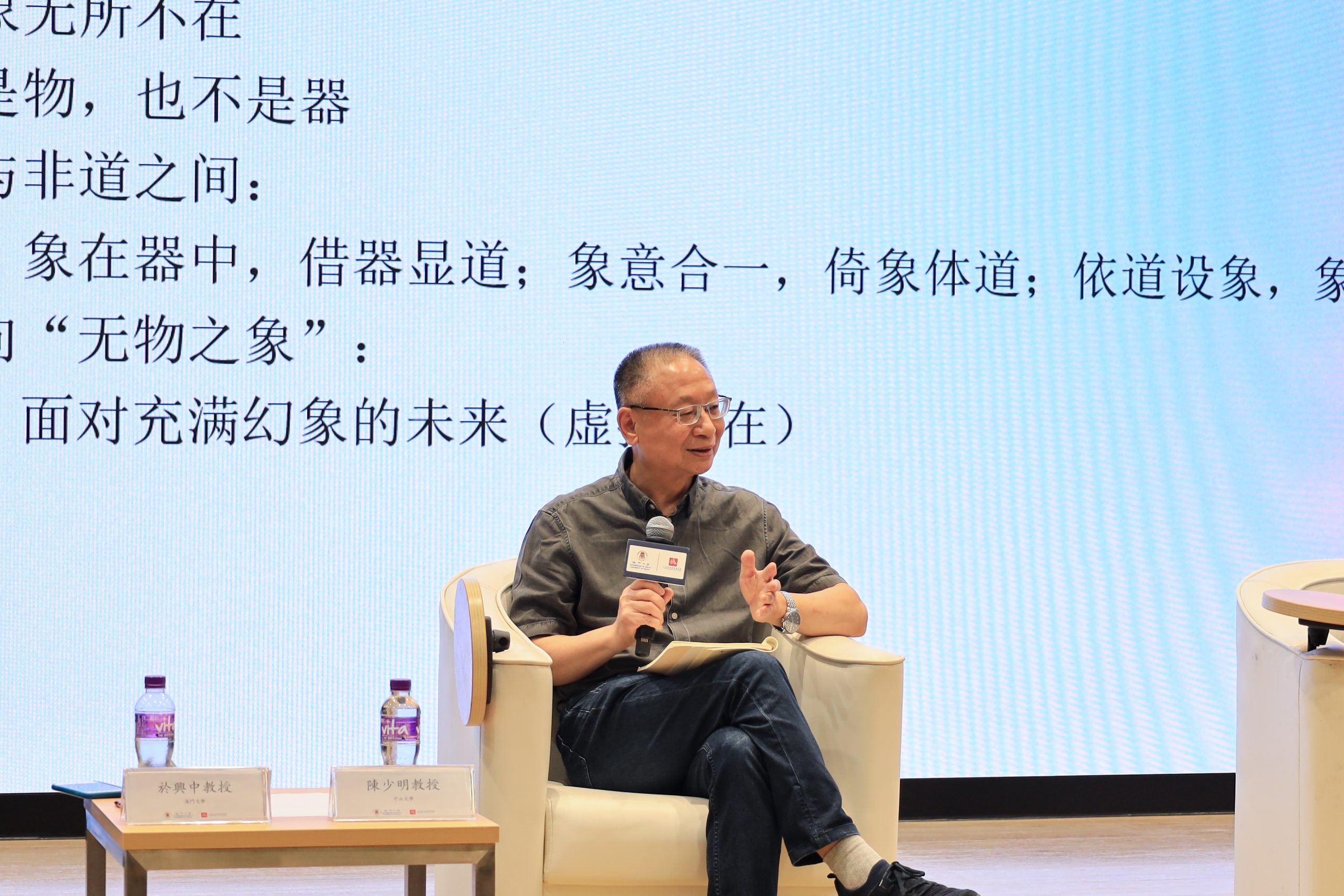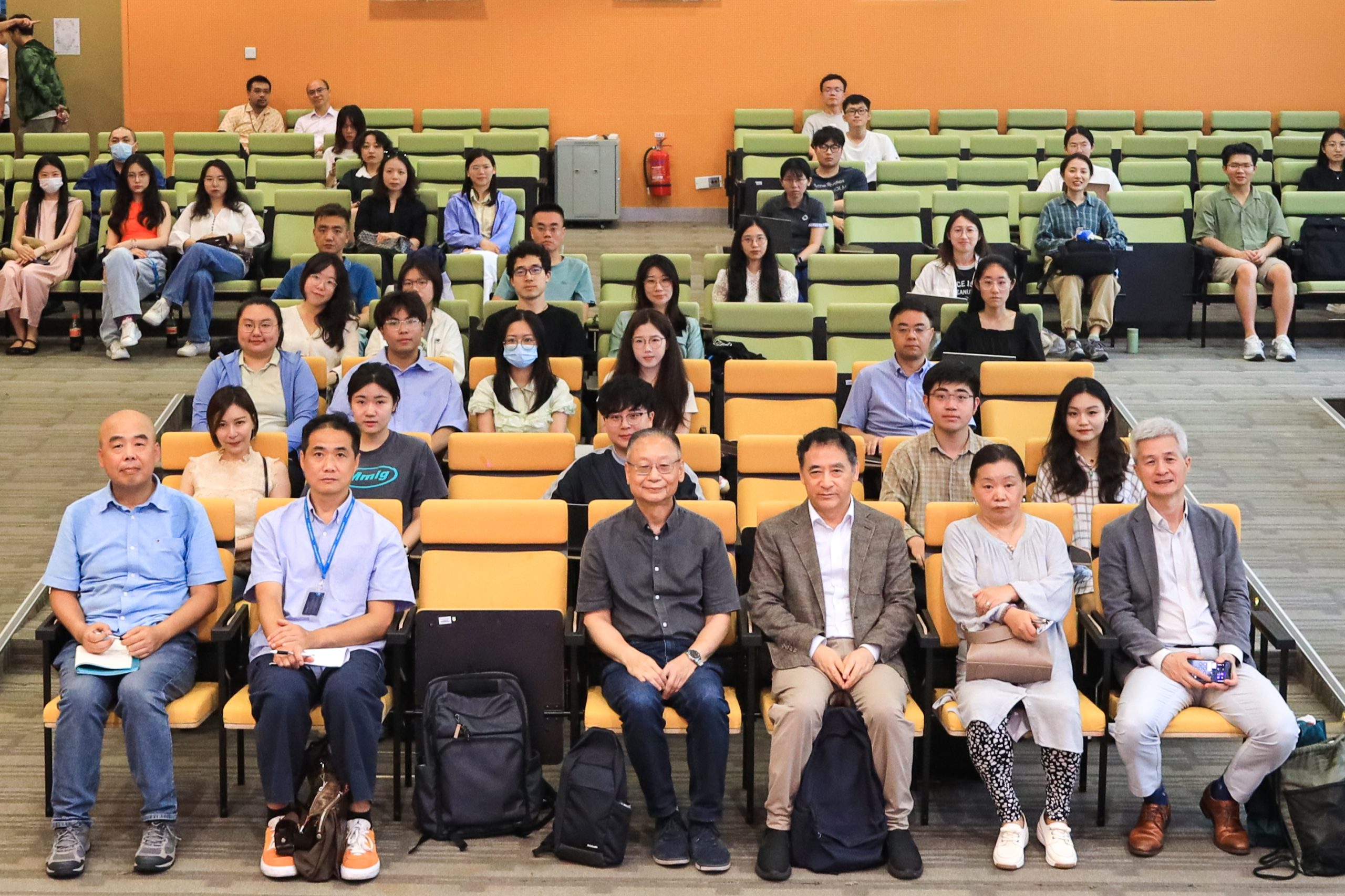【IAS&FAH-DPHIL】The UM Philosophy Forum Distinguished Scholars Series – 7 was successfully held
【高研院&人文學院哲學與宗教學系】澳大哲學名師系列講堂 – 7成功舉行

| The IAS promotional video has been launched! We cordially invite you to watch and help spread the word! | ||
|
English |
|
中文 |
 On the occasion of the fifth anniversary of the Institute for Advanced Studies in Humanities and Social Sciences at the University of Macau, we would like to express our gratitude for your unwavering support to us. Your involvement and support have helped build a strong foundation for our interdisciplinary research platform and inspired us to keep moving forward. The IAS is excited to carry on our mission, rooted in Macau, by organizing high-quality academic activities that showcase the diversity of academic collaboration. On the occasion of the fifth anniversary of the Institute for Advanced Studies in Humanities and Social Sciences at the University of Macau, we would like to express our gratitude for your unwavering support to us. Your involvement and support have helped build a strong foundation for our interdisciplinary research platform and inspired us to keep moving forward. The IAS is excited to carry on our mission, rooted in Macau, by organizing high-quality academic activities that showcase the diversity of academic collaboration. |
||
4月28日,由澳門大學人文社科高等研究院(IAS)和人文學院(FAH)哲學與宗教學系聯合舉辦的“澳大哲學名師系列講堂第七講”於圖書館演講廳成功舉行。此次講座主題為“原象:對抽象、想象和象徵問題的關聯考察”,由中山大學哲學系教授陳少明教授主講,澳門大學人文學院哲學與宗教學系陳立勝教授和張穎教授擔任與談人,高研院院長、法學院講座教授於興中教授擔任主持人。
陳少明教授以“原象”為核心,探討其作為抽象與具象橋梁的哲學意義。他指出,“原象”是人類認知的起點,如中國哲學中“氣”與“象”的概念,通過具體物象(如“大象”)抽象到哲學範疇,貫穿文字、藝術、貨幣等文明符號的演變。例如,象形符號通過簡化成為抽象文字,貨幣從實物到數字交易的抽象化,均體現人類通過抽象思維簡化複雜事物的能力。
張穎教授從藝術與哲學的視角切入,強調抽象與具象的辯證關係。她以“白馬非馬”為例,指出抽象概念(如“馬”)與具體事物(如“白馬”)的互動性,並引用西方抽象表現主義藝術與絕對音樂的例子,說明抽象藝術雖不依賴具體物象,卻能激發觀眾想象。她指出,抽象並非剝離具象,而是通過符號與形式傳遞深層意義。
陳立勝教授對比了中西哲學,指出中國哲學(如道家“混沌”思想)反對過度抽象,提倡具象與抽象的平衡。他以茶道、戲曲等文化實踐為例,闡釋感官抽象如何傳遞哲學意涵,如茶道通過味覺體驗體現“道”的具象化表達。
現場聽衆圍繞“原象”在當代社會所面臨的挑戰展開深入討論。陳少明教授指出,面對觀念藝術等“無物之象”的新趨勢,人類須適應抽象思維的深化,以應對現代文化形態的轉變;陳立勝教授則呼籲從中國哲學中汲取智慧,以避免符號異化對人文精神的侵蝕。
本次活動通過哲學、藝術與文化的多維對話,深化了對抽象與具象關係的理解,闡明了抽象思維在文明演進中的核心作用,為跨學科研究提供了嶄新的視角與啟發。
The UM Philosophy Forum Distinguished Scholars Series 7, co-organized by the Institute of Advanced Studies in Humanities and Social Sciences (IAS) and the Department of Philosophy and Religious Studies of the Faculty of Arts and Humanities (FAH), was successfully held on April 28, at E2 Library Auditorium. The keynote speaker, Professor Shaoming Chen, Professor of the Department of Philosophy at Sun Yat-sen University delivered a wonderful speech on “Yuan Xiang: A Connected Exploration of Abstraction, Imagination and Symbolism.” Professor Lisheng Chen and Professor Ellen Zhang from the Department of Philosophy and Religious Studies, FAH, were invited as the discussants, and Professor Xingzhong Yu, Director of IAS and Chair Professor of FLL was invited as the moderator.
Professor Shaoming Chen firstly introduced “Yuan Xiang” as a philosophical concept that bridges abstract thought and concrete perception. He emphasized its role in Chinese philosophy, such as the evolution of “Qi” (vital energy) and “Xiang” (image) from tangible phenomena to abstract philosophical categories. For instance, the simplification of oracle bone script’s pictographic characters into abstract writing systems, and the transition from physical currency to digital transactions, exemplify humanity’s reliance on abstraction to distill complexity.
Professor Ellen Zhang explored the interplay between abstraction and concreteness through art and philosophy. Citing the classical paradox “A white horse is not a horse,” she highlighted how abstract concepts (e.g., horse) interact with concrete instances (e.g., white horse). She also referenced Western abstract expressionism and “absolute music,” arguing that abstraction does not negate concreteness but instead uses forms and symbols to evoke deeper meaning.
Professor Lisheng Chen compared Chinese and Western philosophy. He pointed out that Chinese philosophy (such as Taoist “chaos” thought) opposes excessive abstraction and advocates a balance between concreteness and abstraction. He illustrated this through cultural practices like tea ceremony and theater, where sensory experiences (e.g., taste, movement) embody philosophical concepts such as “the Dao.”
The audience engaged in the discussion session on the challenges faced by the concept of “Yuan Xiang” in contemporary society. Professor Shaoming Chen highlighted that the rise of conceptual art and other forms of “imageless representation” reflects a broader cultural shift, requiring humanity to cultivate more advanced abstract thinking in order to navigate the evolving landscape of modern cultural expression. Professor Lisheng Chen, meanwhile, called for drawing wisdom from Chinese philosophy to resist the alienation of symbols and the erosion of humanistic values.
Through a multidimensional dialogue spanning philosophy, art, and culture, the event deepened the understanding of the relationship between abstraction and concreteness. It elucidated the central role of abstract thinking in the evolution of civilization and offered new perspectives for interdisciplinary research.








